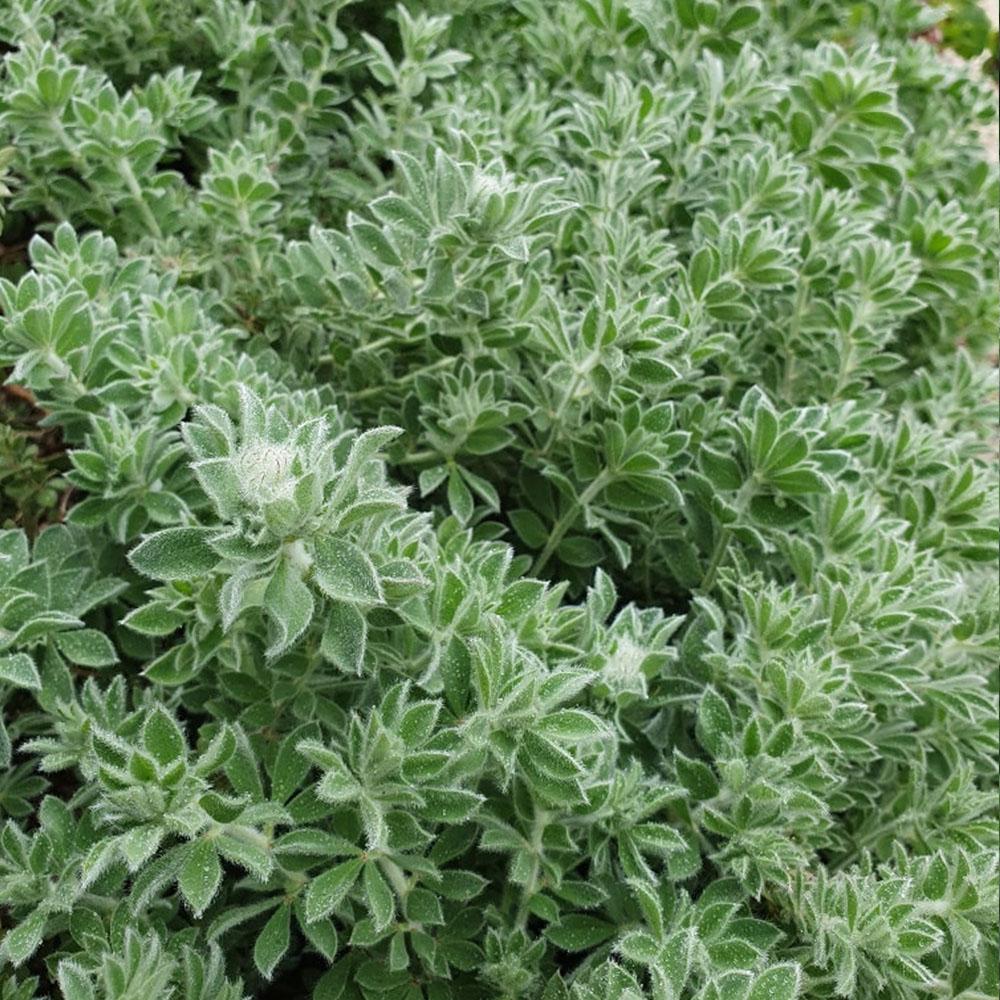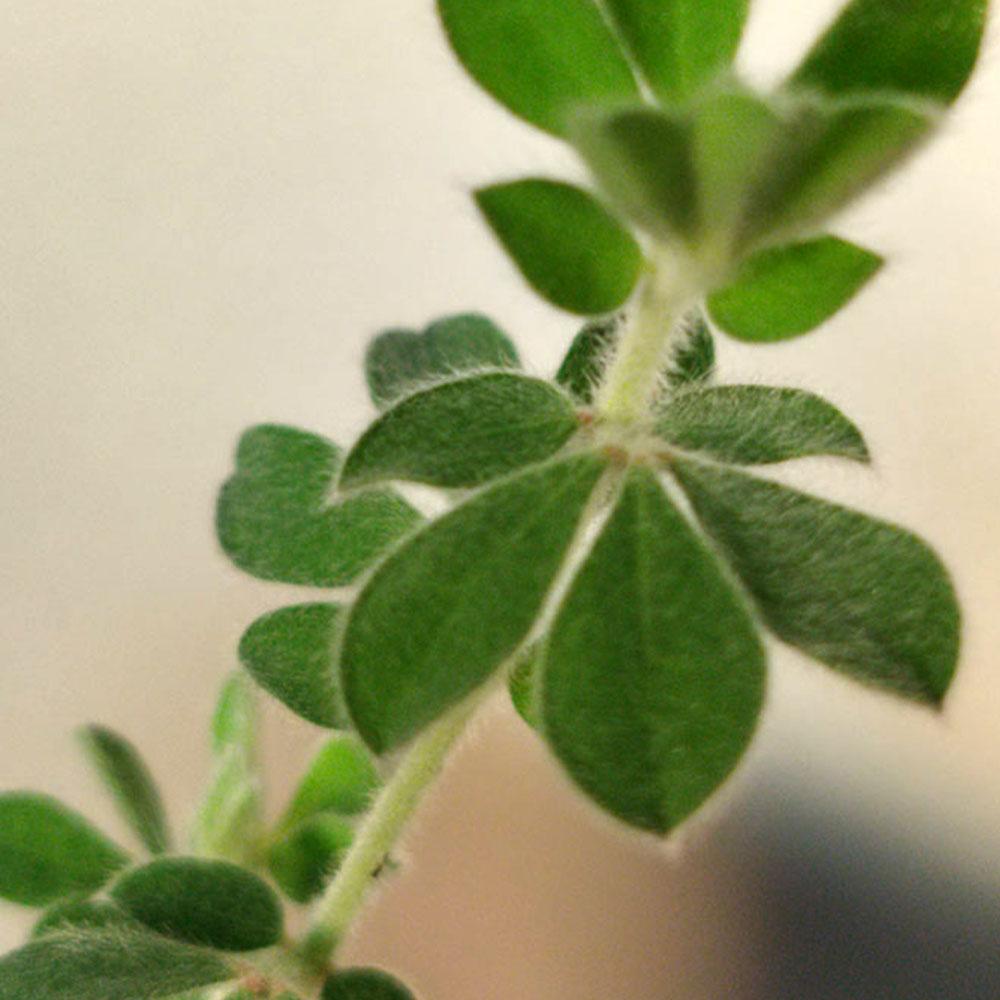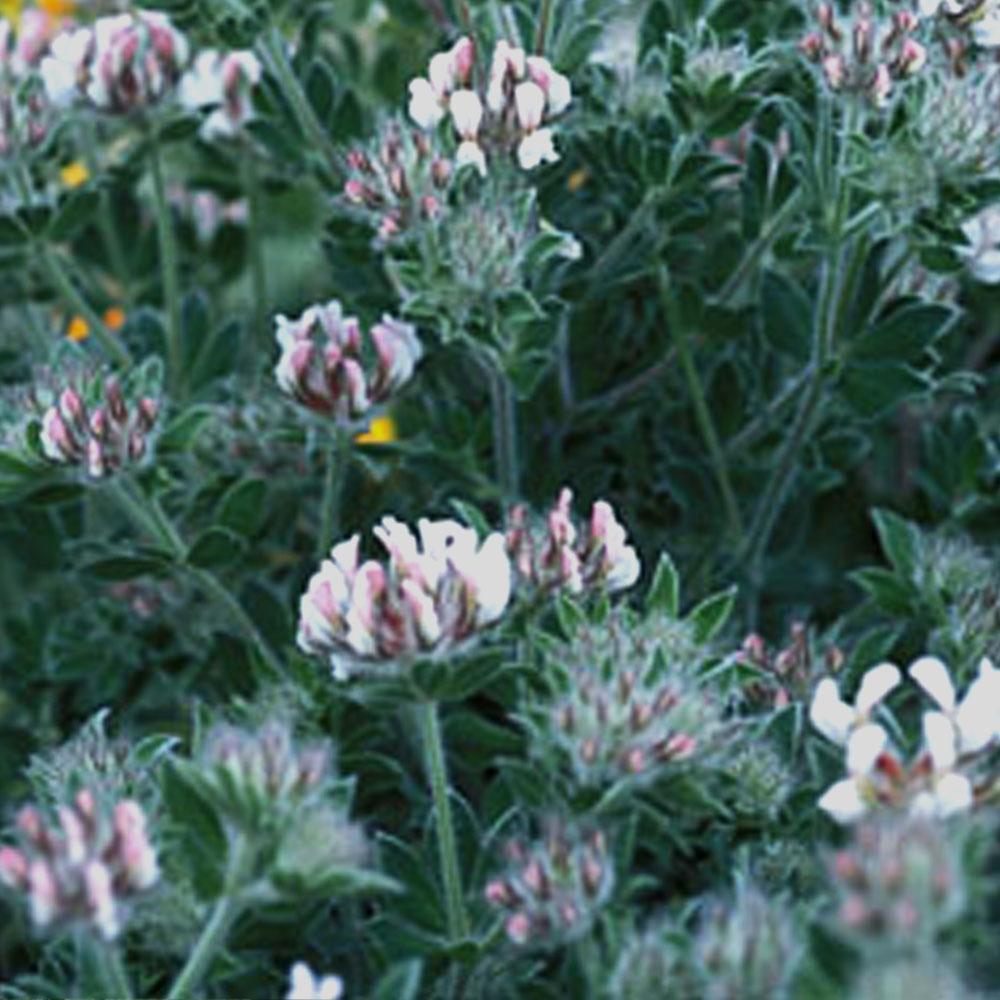No products in the cart.
Lotus hirsutus
A semi-evergreen shrub with soft, silver-grey leaves that loves the sun
Rated 0 out of 5
0 customer reviews
4,90 € – 12,00 €Price range: 4,90 € through 12,00 €
Tags: chaud, duveteux, graphique, gris, perennial, persistant, secheresse, soleil, vivace en pot, xeriscaping
SKU: pda164
Category: Bouquet, Evergreen, Frost Hardy, Grey Ladies, Rewild

Lotus hirsutus
4,90 € – 12,00 €Price range: 4,90 € through 12,00 €
Lotus hirsutus is a semi-evergreen shrub with soft, silver-grey leaves that is both drought tolerant and loves the sun.
It is commonly known as Hairy Bird’s-foot Trefoil due to its trifoliate leaves and pea-like flowers. This species is valued for its ornamental flowers, drought tolerance, and ability to thrive in poor soils.
The leaves are trifoliate, elliptic to lanceolate, and densely covered in fine hairs, giving them a soft, silver-grey-green appearance.
The hairy foliage helps reduce water loss and protect the plant in dry, sunny habitats.
From late spring to summer, Lotus hirsutus produces clusters of bright yellow, pea-shaped flowers that attract pollinators such as bees and butterflies.
The plant also develops small, slender seed pods typical of legumes, which may persist through late summer.
The plant grows as a low, spreading shrub, typically 30–60 cm tall and up to 1 m wide.
Particularly adapted to withstand periods of drought – largely due to the soft duvet on her leaves – this bush can create a lovely softness on a windowsill or in a garden.
GARDENING TIPS: Lotus hirsutus
-
- Prune to shape when it begins to look too tentacular
- Looks particularly magnificent next to a Salvia, an Origanum or any of the Euphorbias.
The Tales & The Botany: Lotus hirsutus
Her nickname is Hairy Canary for its soft leaves and generally soft appearance and nature. That’s all tbere is to say here – and that’s really enough I think!
Lotus hirsutus is primarily grown for ornamental purposes, particularly in Mediterranean, rock, and xeriscape gardens.
Its bright yellow flowers and soft, grey-green foliage provide attractive contrast in borders, slopes, or container plantings.
The plant is highly drought-tolerant, thrives in poor, well-drained soils, and prefers full sun.
It is low-maintenance and resistant to most pests and diseases.
As a member of the legume family, Lotus hirsutus can fix atmospheric nitrogen, enriching the soil and benefiting surrounding plants.
Its flowers provide nectar for pollinators, supporting local biodiversity in garden and natural settings.
Other Names
Canary clover
Hairy canary-clover
Origin
Mediterranean
| Weight | 0,5 kg |
|---|---|
| Container Size | 9×9 cm, 2L |
| Flowering | May, June, August |
| Exposure | Full Sun |
| Soil | Chalk, Loam, Sandy |
| Frost Tolerance | -5°C to -10°C |
| Size | 0.8m H x 0.8m W |
Reviews
0
Rated 0 out of 5
0 customer reviews
5
0
4
0
3
0
2
0
1
0
Only logged in customers who have purchased this product may leave a review.
Related Products
Jacobaea maritima
A wooly white perennial plant from the Mediterranean region.
A wooly white perennial plant from the Mediterranean region.
Rated 0 out of 5
Tanacetum densum subsp amani
A shrublet composed of soft, finely divided silvery gray-white leaves.
A shrublet composed of soft, finely divided silvery gray-white leaves.
Rated 0 out of 5
Potentilla anserina
A distinctly silvery, silky and lacy perennial.
A distinctly silvery, silky and lacy perennial.
Rated 0 out of 5
Helichrysum italicum
An evergrey, fragrant perennial that will bring a distinctly Mediterranean atmosphere.
An evergrey, fragrant perennial that will bring a distinctly Mediterranean atmosphere.
Rated 0 out of 5
Aegopodium podagraria ‘Variegata’
A popular light, green and white groundcover.
A popular light, green and white groundcover.
Rated 0 out of 5
Stachys byzantina
Silky white-grey leaves and tall striking flowers
Silky white-grey leaves and tall striking flowers
Rated 0 out of 5
Sedum spectabile Septemberglut
A species of flowering plant in the stonecrop family – drought tolerant, with vibrant pink flowers and a spectacularly long flowering period.
A species of flowering plant in the stonecrop family – drought tolerant, with vibrant pink flowers and a spectacularly long flowering period.
Rated 0 out of 5
Artemisia alba subsp camphorata
A highly fragrant, grey-green bush.
A highly fragrant, grey-green bush.
Rated 0 out of 5
Euphorbia myrsinites
Known for its draping form of silver-gray foliage and radiant blooms.
Known for its draping form of silver-gray foliage and radiant blooms.
Rated 0 out of 5
Lavandula angustifolia
A highly aromatic, flowering perennial used for cooking in many cultures
A highly aromatic, flowering perennial used for cooking in many cultures
Rated 0 out of 5
Artemisia Valerie Finnis
A semi-evergreen, aromatic variation on the theme of Artemisia.
A semi-evergreen, aromatic variation on the theme of Artemisia.
Rated 0 out of 5
Nepeta x faassenii
Catnip is known for its grey-green, aromatic foliage and masses of lavender blue flowers.
Catnip is known for its grey-green, aromatic foliage and masses of lavender blue flowers.
Rated 0 out of 5
Koeleria glauca Blue Sprite
An ornamental, low growing blue grass
An ornamental, low growing blue grass
Rated 0 out of 5
Salvia officinalis
A fragrant herb used in many cultures for cooking and deserts.
A fragrant herb used in many cultures for cooking and deserts.
Rated 0 out of 5
Salvia sclarea – Clary Sage
A fuzzy perennial that is largely grown for its essential oil.
A fuzzy perennial that is largely grown for its essential oil.
Rated 0 out of 5
Mertensia maritima
A deciduous perennial with fleshy, blue-grey-green leaves that naturally thrives on the wind and sea swept coasts
A deciduous perennial with fleshy, blue-grey-green leaves that naturally thrives on the wind and sea swept coasts
Rated 0 out of 5
Helichrysum orientale
A perennial with soft, ash gray foliage and yellow button flowers
A perennial with soft, ash gray foliage and yellow button flowers
Rated 0 out of 5
Cerastium tomentosum var. columnae
A grey-green spreading ground cover from the mountains.
A grey-green spreading ground cover from the mountains.
Rated 0 out of 5
recent view product
Crassula perforata
A slow-growing succulent with graphic rambling stems
A slow-growing succulent with graphic rambling stems
Rated 0 out of 5
Houttuynia cordata ‘Chameleon’
A fragrant and ornamental perennial with color-shifting foliage
A fragrant and ornamental perennial with color-shifting foliage
Rated 0 out of 5
Salvia officinalis ‘Bergartten’
Salvia officinalis ‘Bergartten’ is a variety of sage that is prized for its large, round silver-blue leaves and soft blooms in the summer.
Salvia officinalis ‘Bergartten’ is a variety of sage that is prized for its large, round silver-blue leaves and soft blooms in the summer.
Rated 0 out of 5
Helichrysum orientale
A perennial with soft, ash gray foliage and yellow button flowers
A perennial with soft, ash gray foliage and yellow button flowers
Rated 0 out of 5
Achillea ptarmica Boule de Neige
White pompom flowers to attract bees to your garden all summer long.
White pompom flowers to attract bees to your garden all summer long.
Rated 0 out of 5















































There are no reviews yet.